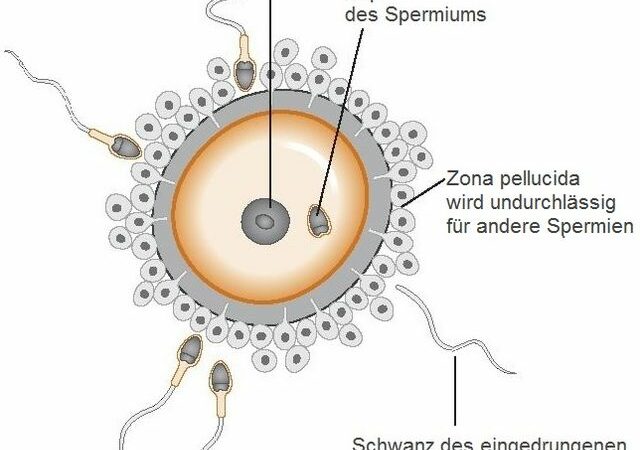Zygote:
33 Fragen von Zygote im September 2022
Die 33 Fragen, die die höchsten Beamten des Universitätskrankenhauses, des Nationalen Gesundheitsinstituts und des Gesundheitsministeriums nicht beantworten wollen.
- Wie lautet die Definition des Begriffs “lebend geboren” in der Geburtsurkunde?
- Warum wird dieser Begriff ” g e s p e r r t ” geschrieben und nicht in der normalen grammatikalischen Form, wie alle anderen Begriffe auf dem Dokument?
- Bedeutet der Begriff dasselbe wie die Wörterbuchbedeutungen der gleichen Wörter?
- Wie lautet die gerichtsmedizinische/medizinisch-juristische Definition von “lebend geboren”?
- Soll der Begriff dasselbe bedeuten wie “Lebendgeburt” in der EU-Begriffsbank (term bank)?
- Kann eine Plazenta, die vom Baby abgetrennt wurde, als “lebend geboren” gelten?
- Warum werden in der Bescheinigung über die Lebendgeburt keine biometrischen Maße der Plazenta angegeben?
- Wie ist der Begriff “Geburt” in der Bescheinigung zu definieren?
- Wie ist der Begriff “Geburtsdatum” in der Bescheinigung zu definieren?
- Warum ist der Abschnitt, in dem die unterzeichnende Krankenschwester die Richtigkeit der gemachten Angaben bezeugt, so formuliert, dass der Satz keinen Sinn ergibt und nicht ausdrückt, was genau bescheinigt wird?
- Was soll der Satz über die Bescheinigung der Richtigkeit der Angaben bedeuten?
- Wo kann ich die Definition der im Dokument verwendeten Begriffe finden?
- Gibt es Anweisungen für die Personen, die dieses Formular ausfüllen und verwenden, in denen die beabsichtigte Bedeutung der Begriffe, die rechtliche Relevanz der Begriffe und die korrekte Auslegung der in dem Dokument verwendeten Begriffe erläutert werden?
- Nach den geltenden Rechtsvorschriften muss die Geburtsurkunde in drei identischen Exemplaren ausgestellt werden. Wer ist im Besitz dieser drei Ausfertigungen?
- Nach den geltenden Rechtsvorschriften muss das Krankenhaus auf den Formularen die “obligatorischen” Angaben über die Mutter und das Kind machen. Wie lautet die Definition des Begriffs “obligatorisch”?
- Wurde eine Kopie der Lebendgeburtsurkunde vom Krankenhaus an eine Kirche oder an das Melderegister übergeben?
- Die Bescheinigung impliziert, dass sich die Plazenta in der Obhut und Verwahrung des Krankenhauses befindet. Wurden andere Bescheinigungen nur für die Plazenta ausgestellt?
- Dokumentiert die Bescheinigung über die Lebendgeburt genau und wahrheitsgemäß einen Mann, dessen Ursprung die Befruchtung ist?
- Nach Ansicht des staatlichen Sprachendienstes muss der Verfasser eines Dokuments sicherstellen, dass der Benutzer des Dokuments die Wörter und Begriffe des Dokuments richtig versteht. Wie haben die NIH sichergestellt, dass diejenigen, die dieses Dokument verwenden, seine Terminologie und rechtlichen Auswirkungen richtig verstehen?
- Wer ist der Eigentümer der Plazenta, wenn sie sich in der Obhut des Krankenhauses befindet?
- Ist das Gesetz über Fundsachen in irgendeiner Weise auf die Eigentumsvermutung für die Plazenta anwendbar?
- Kann eine Plazenta, die im Gewahrsam eines Krankenhauses belassen wird, als “institutioneller Fund” im Sinne des Fundsachengesetzes angesehen werden?
- Welche Informationen werden erfasst und welche Unterlagen werden über eine Plazenta erstellt, die in der Obhut eines Krankenhauses zurückgelassen wird?
- Wer erstellt in einem Krankenhaus Aufzeichnungen über eine Plazenta, wenn diese im Gewahrsam des Krankenhauses zurückgelassen wird?
- Entsteht dadurch, dass eine Plazenta im Gewahrsam des Krankenhauses verbleibt, ein Treuhandverhältnis zwischen dem Krankenhaus und dem Baby, dessen Organ die Plazenta ist?
- Gibt das Krankenhaus in irgendeiner Form Informationen über die Plazenta an das Einwohnermeldeamt, an eine Kirche oder an die Polizei weiter?
- Kann das NIH1 einen “Todesbericht” über eine Plazenta erstellen, und zwar in dem Sinne, in dem dieser Begriff in der Rechtsverordnung über die Untersuchung der Todesursache verwendet wird?
- Wenn Informationen über die Plazenta an andere Beamte weitergegeben werden, mit welcher konkreten Befugnis geschieht dies?
- Wer ist Eigentümer der Dokumente, wenn im Krankenhaus Dokumente über die Plazenta erstellt werden?
- Ist eine der folgenden Organisationen an der Aufbewahrungskette der Plazenta beteiligt:die Polizei, das Rote Kreuz, eine Kirche, ein Krematorium oder eine Krematoriumsstiftung oder eine private Vereinigung, die zum Zweck der Leichenbeseitigung gegründet wurde?
- Wer ist der Regierungsbeamte, der für die Aufbewahrungskette der Plazenta zuständig ist?
- Die Kirche hat eine Meldung über ein Kind an das Melderegister gegeben und erklärt, dass die Informationen auf diesem Formular vom Krankenhaus stammen. Die Meldung der Kirche enthält keine biometrischen Informationen über eine Person. Welche Informationen hat das Krankenhaus konkret und in welchem Format an die Kirche weitergegeben?
- Kann die Abtrennung einer Plazenta von einem Baby als Menschenhandel im Sinne der Definition dieses Begriffs im Palermo-Protokoll der Vereinten Nationen gegen die grenzüberschreitende organisierte Kriminalität definiert werden? 3:00 PM [ 2022-Sep-08 ] Lassen Sie es mich wissen, wenn Sie die Zitate benötigen…
Zygote Today at 2:59 PM [ 2022-Sep-08 ]
The 33 questions that the highest officials in the University Hospital, the National Institute of Health, and the Ministry of Health have refused to answer.
- What is the definition of the term ‘born alive’ on the Certificate of Live Birth?
- Why is that term written in ‘sperren’, and not using the normal grammatical form, as all of the other terms on the document?
- Does the term mean the same as the dictionary meanings of the same words?
- What is the forensic medicine / medical jurisprudence definition of a ‘born alive’?
- Is the term intended to mean the same as ‘live birth’ in the EU term bank?
- Can a placenta, when detached from the baby, be deemed ‘born alive’?
- Why is there no biometric measures of the placenta on the Certificate of Live Birth? 8. What is the intended definition of the term ‘birth’ on the certificate?
- What is the intended definition of the term ‘birthdate’ on the certificate?
1 NIH = „National Institute of Health“
- Why is the section where the signing nurse witnesses the veracity of the information provided worded so that the sentence does not make sense, and does not express what exactly is being certified?
- What is the sentence regarding the witnessing of the veracity of the information intended to mean?
- Where can I find the definition of the terms used in the document?
- Are the any instructions for the people filling and using this form, which would explain the intended meaning of the terms, the judicial relevance of the terms, and the correct intended interpretation of the terms used on the document?
- According to the applicable statutes, the Certificate of Live Birth needs to be issued in three identical copies. Who is in possession of these three copies?
- According to the applicable statutes, the hospital needs to fill on the forms the ‘mandatory’ information about the mother and the child. What is the definition of the term ‘mandatory’?
- Was any copy of the Certificate of Live Birth delivered by the hospital to any church, or to the population register?
- The certificate implies, that the placenta is in the custody and safekeeping of the hospital. Has any other certificates been issued on the placenta alone?
- Does the Certificate of Live Birth document accurately and truthfully a man whose origin is the fertilization?
- According to the government department of linguistics, the writer of a document must make sure that the user of the document understands the words and terms of the document correctly. How has the NIH assured that those who use this document understand its terminology and legal effects correctly?
- Who is the owner of the placenta, when it’s in the custody of the hospital?
- Does the statute on lost goods apply to the presumption of ownership of the placenta in any way?
- Can a placenta, which is left in the custody of a hospital, be deemed an ‘institutional find’, as the term is defined in the statute of lost goods?
- What information is recorded and what documentation is created about a placenta that is left in the custody of a hospital?
- Who in a hospital creates any records of a placenta when it’s left in the custody of the hospital?
- Does the fact that a placenta is left in the custody of the hospital create a fiduciary relationship between the hospital and the baby whose organ the placenta is?
- Does the hospital give any information in any format about the placenta to the population register, any church, or to the police?
- Can the NIH give a ‘death report’ on a placenta, in the meaning the meaning that the term is applied in the statutory instrument on the investigation of the cause of death?
- If any information regarding the placenta is given to other officials, by which specific authority is that done?
- Who owns the documents, if any documents are created in the hospital on the placenta?
- Has any of the following organisations been involved in the chain of custody of the placenta: police force, the Red Cross, any church, any crematorium or crematorium foundation, or any private association created for the purpose of disposal of dead bodies?
- Who is the government official responsible for the chain of custody of the placenta?
- The church has given a notification of a child to the population register, and states that the information on that form is obtained from the hospital. The notification from the church contains no biometric information about anyone. Which information specifically, and in which format, has the hospital given to the church?
- Can the severance of a placenta from a baby be defined as human trafficking in the sense that the term is defined in the UN Palermo Protocol against transnational organized crime?
3:00 PM [ 2022-Sep-08 ] Let me know if you need the citations…
Bezüglich der 33 Fragen von „Zygote“ im September 2022
Original text (engl.)
I’m not asking and sending those questions because I don’t know the answers. The answers are self- evident from the paperwork and the statutes, which don’t create a coherent process in any other way except the way I described in my last Crow episode. If something else happened, it would have been against what their own laws say.
The reason I’m asking and sending these questions is because I’m informing them, and making them think about that process. When they receive the questions, and think about the process, it puts their conscience in conflict with their statements, and gives arise to their fiduciary obligations as a constructive trustee. They don’t even have to answer the questions for that to happen, but if they do, they will admit a breach of the Palermo protocol.
Übersetzung
„Ich stelle und sende diese Fragen nicht, weil ich die Antworten nicht kenne. Die Antworten ergeben sich aus dem Papierkram und den Gesetzen, die keinen anderen kohärenten Prozess vorsehen als den, den ich in meiner letzten Crow-Folge beschrieben habe. Wenn etwas anderes passiert wäre, hätte es gegen ihre eigenen Gesetze verstoßen.
Der Grund, warum ich diese Fragen stelle und verschicke, ist, dass ich sie informiere und sie dazu bringe, über diesen Prozess nachzudenken. Wenn sie die Fragen erhalten und über den Prozess nachdenken, bringt das ihr Gewissen in Konflikt mit ihren Aussagen und lässt ihre treuhänderischen Pflichten als konstruktiver Treuhänder entstehen. Dazu müssen sie die Fragen nicht einmal beantworten, aber wenn sie es tun, geben sie einen Verstoß gegen das Palermo-Protokoll zu.“
Original text (engl.)
Asking the questions is also probing for intention. The system is so methodically precise that it cannot be a mistake, which means that some people intentionally keep this system going. Now, intention is very important in law. It turns an injury from an accident into a crime. The intention can also manifest in intentional inaction, refusal to answer and make enquiries, so the only thing you really need to do, is make them aware. If they don’t stop, they’ll incriminate themselves, due to Idem est facere et nolle prohibere cum possis. – “Person in a position of authority who tolerates a wrongful act assumes equal responsibility for the act, as if he had preformed it himself.” —————-
Übersetzung
Diese Fragen zu stellen ist eine Überprüfung der Absicht(en). Das System ist methodisch so präzise, dass es kein Fehler sein kann, was bedeutet, dass einige Leute dieses System absichtlich am Laufen halten. Jetzt ist in der Rechtswissenschaft die Absicht sehr wichtig. Sie (die Absicht) macht aus einer Unfallverletzung ein Verbrechen.
Die Absicht kann sich auch in absichtlicher Untätigkeit, Weigerung zu antworten und der Weigerung Nachforschungen anzustellen manifestieren.
Wenn sie nicht aufhören, werden sie sich selbst belasten, denn Idem est facere et nolle prohibere cum possis. – “Ein Amtsträger, der eine unrechtmäßige Handlung duldet, trägt die gleiche Verantwortung für die Handlung, als ob er sie selbst begangen hätte.”
Bezüglich der 33 Fragen von „Zygote“ im September 2022
Original text (engl.)
The core element (and excuse) of the system is the transfer of liability of the wrongful acts from them to you, through presumed consent. That mechanism is also inbuilt in the system, and that fact that it is, shows that they know the liability exists. They use every trick imaginable to escape the liability and to create assumptions and ‘evidence’ of your consent and ignorance.
The very word ‘mandate’ is a great example of that. It’s a contract law term describing an obligation to perform according to an existing contract, the terms of which you are assumed to have accepted. The assumed acceptance is inferred from your actions, such as ‘identifying as’ the registered person, or perhaps wearing a mask.
Übersetzung
Das Kernelement (und die Entschuldigung / Ausrede) des Systems besteht im Übertragen von Haftung für rechtswidrige Handlungen von ihrer Seite auf Euch (Haftungsverschiebung).
Dieser Mechanismus ist ebenfalls in das System eingebaut, und da dieser Mechanismus faktisch besteht, zeigt, dass sie wissen, dass die Haftung existiert. Sie wenden jeden erdenklichen Trick an, um sich der Haftung zu entziehen und Vermutungen und ‚Beweise‘ Eurer Zustimmung und Unwissenheit zu schaffen.
Das Wort “Mandat” selbst ist bereits ein gutes Beispiel dafür. Es handelt sich dabei um einen Begriff aus dem Vertragsrecht, der eine Verpflichtung zur Erfüllung eines bestehenden Vertrages beschreibt, dessen Bedingungen als von Euch akzeptiert vermutet werden. IHRE Vermutung Eurer Akzeptanz wird aus Euren Handlungen abgeleitet, z. B. wenn Ihr Euch als die registrierte Person identifiziert oder vielleicht eine Maske tragt.
Original text (engl.)
Because of the ability to infer your consent and even intention by unilateral interpretation of words and acts, they can spin the wheel as long as they want, unless you start defining, showing and proving what they are doing.
The only thing you do, is you drop all of your assumptions, and approach all of their claims like a child, asking why do you do and assume that. Dropping your assumptions makes asking the questions logical and necessary, and it forces them to reveal their true nature.
They know they are liable, and they will eventually burn their own libraries and hack their own databases in order to delete the evidence.
But even that won’t change the reality.
Übersetzung
Aufgrund der Möglichkeit, durch einseitige Auslegung von Worten und Handlungen auf Eure Einverständnis und sogar auf Eure Absicht zu schließen, können sie das Rad so lange weiterdrehen, wie sie wollen, es sei denn, Ihr beginnt zu definieren, zu zeigen und zu beweisen, was SIE tun.
Das Einzige, was Ihr tut, ist, all Eure (vorgreifenden) Vermutungen fallen zu lassen und wie ein Kind an all ihre Behauptungen heranzugehen und zu fragen, warum SIE das tun und voraussetzen. Indem Ihr Eure Vermutungen fallen lasst, ermöglicht, die sich aus der Logik hergeleiteten Schlussfolgerungen notwendigen Fragen zu stellen, und es zwingt sie, ihre wahre Natur zu offenbaren.
Sie wissen, dass sie haftbar sind, und sie werden schließlich ihre eigenen Bibliotheken verbrennen und ihre eigenen Datenbanken hacken, um die Beweise zu löschen / vernichten.
Aber selbst dies wird die Wirklichkeit nicht ändern.

#########################
Wenn Du magst kannst Du uns, für die Mühe und den Zeitaufwand einen Kaffee hinterlassen,
Vielen Dank❤️🙏🏻❤️🙏🏻❤️🙏🏻

Die Redaktion distanziert sich vorsorglich von jedem Artikel. Die Artikel spiegeln nicht zwangsläufig die Meinung der Redaktion wieder, vielmehr dienen sie nur zur freien Meinungsbildung. Niemand ist perfekt, und Irrtum ist möglich. Zudem: es ist nur eine Information und hat nicht zwangsläufig die Aufmerksamkeit der Redaktion.


